10 Most Beautiful Birds in the World
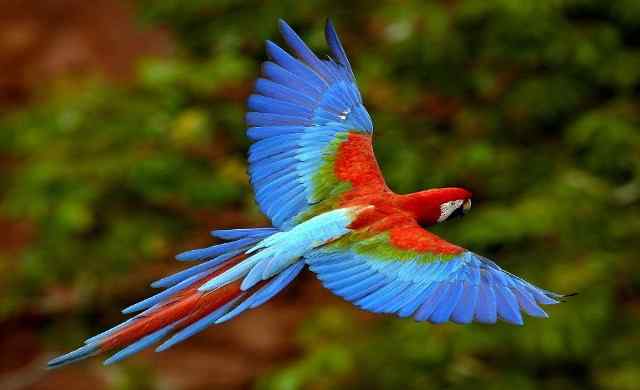
With over 10,000 kinds of birds worldwide, many of which are incredibly beautiful, naming the most beautiful birds is a difficult challenge. And, although they are mostly charming, some birds are examples of pure beauty. The proof with these rare birds is considered to be the all-time most beautiful ever.
Most Beautiful and Incredible Birds in the World
Do you need some color in your life? You simply need to look to our feathered friends for inspiration, as the world’s most beautiful birds offer a stunning assortment of forms, colors, and patterns to feast your eyes on. Given our diverse personal preferences, we understand that compiling a list of the most beautiful birds can be a highly subjective endeavor.
1. The Blue Jay
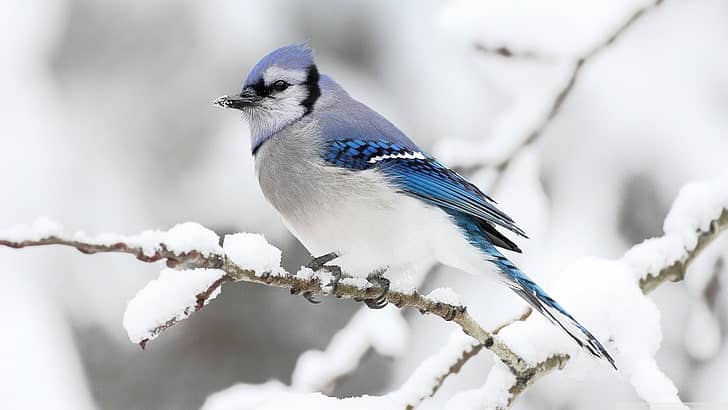
The blue jay is a small passerine bird found in the forests of North America but also in the Gulf of Mexico. Beyond its magnificent blue plumage, this bird is known to take ant baths to get rid of parasites.
Blue jays combine beauty and intelligence since they are among the world’s most intelligent birds. Their characteristic “jay jay” sounds make them simple to identify. Blue jays have a brightly colored plumage that is a smart combination of blue, black, and white.
They can replicate the calls of other birds since they are intelligent birds. They can, for example, replicate the sounds of hawks to fool other birds.
They have been observed imitating human speech and even the sounds of other pets while kept in captivity as pets. They can be smart enough to take other birds’ nestlings and eggs.
2. The Golden Pheasant
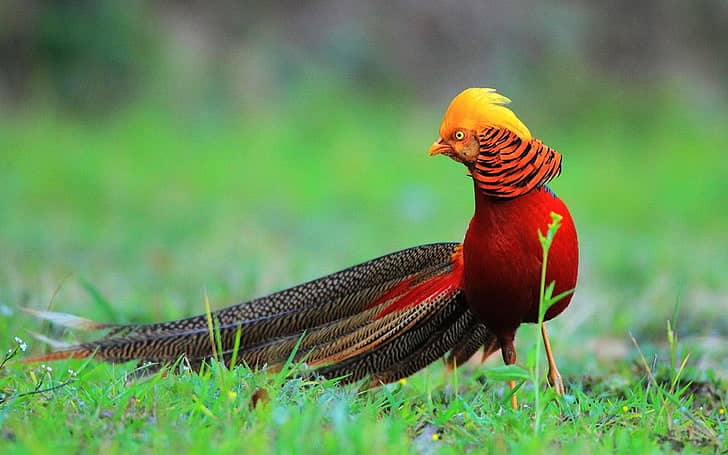
If a beauty competition for birds were held, the golden pheasant would be a strong competitor and would almost certainly win. It is often regarded as one of the most beautiful birds in the world due to its vivid red and golden-yellow plumage.
Males, like other pheasants, are more colorful than females, with more eye-catching plumage colors. Males have crimson flanks and breasts, while females have a more muted brown plumage. The tail accounts for almost two-thirds of the length of a golden pheasant.
This Asian wilderness jewel is made up of a golden pheasant, a golden wattle, and a green upper back. They are typically found on the forest floors because they are weak fliers. A solitary and omnivorous bird, it prefers to move on the ground rather than to fly.
The golden pheasant is famous for its sublime multicolored plumage and golden crest that it proudly wears on the top of its head. Originally from China, it corresponds in every way to the description we have of the legendary phoenix.
3. The Blue-Headed Lorikeet
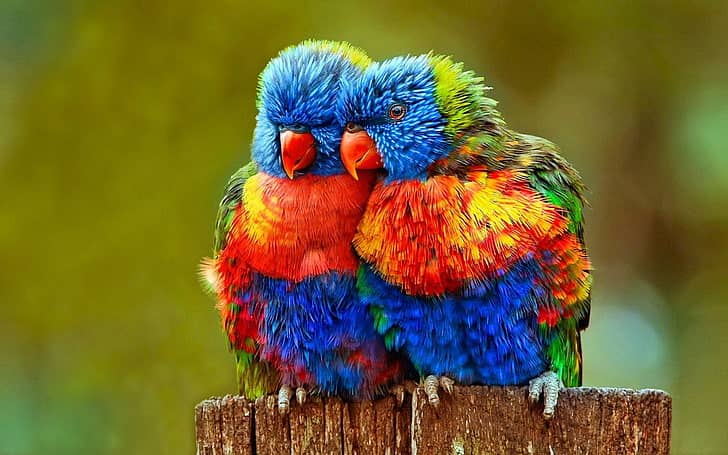
The rainbow lorikeet, which is native to various regions of Australia, was illegally introduced in Auckland in the 1990s. This powerful and prolific bird is now a major danger to our local biodiversity.
Rainbow lorikeets resemble the more widespread eastern rosella. The blue head of the lorikeet is its most noticeable feature. The blue-headed lorikeet is a very colorful parrot known to be very loud.
Indeed, it has a wide range of calls and other twitterings. Endemic to Oceania, this diurnal bird has a brush-shaped tongue that allows it to suck nectar from flowers.
4. The Flamingo
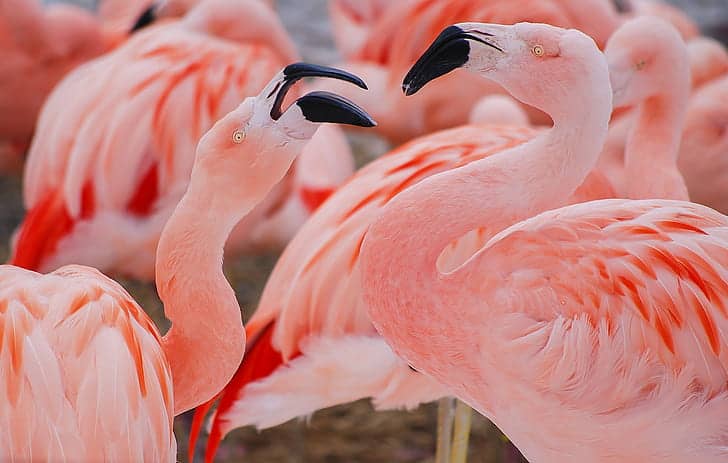
The flamingo lives in groups and has plumage that can range from pale pink to red. It owes its coloring to the crustaceans it feeds on. This bird, which has a lifespan of 30 years in the wild, is known to be able to stand on one leg, especially when sleeping.
Their stunning pink plumage makes them a sight to behold. Flamingos are wading birds that come in six different kinds that are difficult to tell apart. Except for Antarctica, these tropical birds can be found on all continents.
They live in South and Central America, the Middle East, India, Africa’s Rift Valley Lakes, Australia, and other areas. The flamingo is the Bahamas’ national bird.
Flamingos are water birds that live near lakes and lagoons, where they forage for fish, brine shrimp, plankton, blue-green algae, and larvae in the mud.
Flamingos are born white or grey, but the pigments in the algae they eat cause them to turn pink or red. Their plumage color is determined by their nutrition, with brighter plumage indicating a better diet.
5. The Keeled Toucan
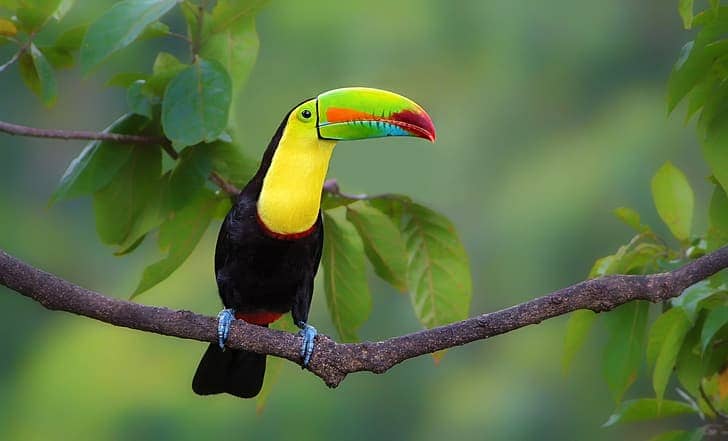
Found in South America, the keel-billed toucan, also called the rainbow toucan, is easily identifiable thanks to its long, colorful banana-shaped beak.
It lives in tropical lowland forests and feeds mainly on fruits, but also insects and eggs. This bird has the particularity of being endowed with a very playful character.
These lovely birds have mostly black plumage with dazzling yellow feathers on the neck and breast. Their face is a complex mix of green and yellow. The brilliant red under feathers in the tail region round out its unusual but attractive appearance.
Birdwatchers hunting for these species should travel to South and Central America’s tropical and subtropical rainforests. The keel-billed toucan can be found in Venezuela, Colombia, and southern Mexico.
Because of its thick wings, the keel-billed toucan is a poor flyer. They may travel small distances by hopping from one tree branch to the next within the forest.
6. The Peacock

The peacock wheel is famous around the world. And for good reason, to seduce females, this bird from India does not hesitate to deploy the feathers of its tail, giving rise to a breathtaking spectacle.
The peacock is famed around the world for its tremendously enticing spread of tail feathers. It has long been admired by royalty and aristocracy, with exports to every corner of the globe and its status as India’s national bird.
The peacock’s famed plume train, comprised of 150 brilliantly colored feathers, is what makes it so beautiful. Then there are the adorable “peacock eye spots” that appear when these feathers are on full show.
Peacocks are noted for having some of the most opulent mating displays in the animal kingdom. Males court ladies (peahens) in a love dance while shaking their magnificent feathers in a spectacular display accompanied by a rustling noise.
7. The Hyacinth Macaw
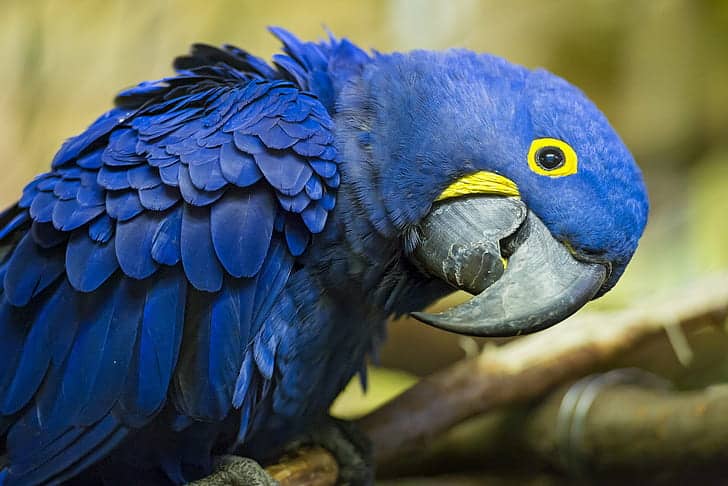
The Hyacinth Macaw lives in South America and is admired not only for its incredible blue plumage but also its size. Indeed, it is considered the largest parrot in the world since it can reach a wingspan of 1.50 meters in adulthood.
Also known as the “blue macaw” because of their striking azure blue plumage that contrasts well with a golden ring around the eyes. The hyacinth macaw is the largest flying parrot species, standing 40 inches tall.
The wingspan is four feet, making it a spectacular species regardless of its stunning colors. Aside from its gorgeous cobalt blue feathers, the hyacinth macaw is distinguished by its arched black bill and endearing long tail.
This most beautiful of birds, which is native to the Amazon, particularly the savannah grasslands of Brazil, is tragically declining in population. Because of hunting and dwindling habitat, there are only around 5,000 of these birds left in the wild.
8. The Royal Crane
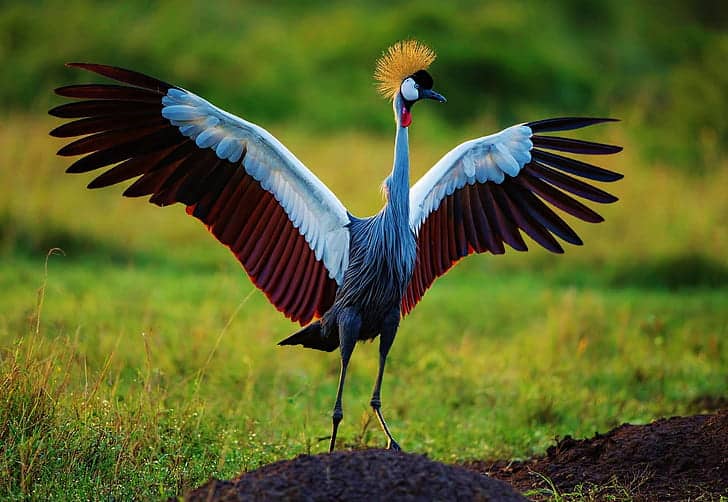
Present only in Africa, the royal crane measures on average 1 meter high with a weight of 3.5 kilos. She is easily recognizable by her crest of golden feathers that stands on top of her head.
Gray-crowned cranes are as majestic as their name implies. These long-legged birds, one of 15 species, have gray bodies, white wings with brown and gold feathers, white cheeks, and brilliant red gular sacs behind their chins. A crown of crisp golden feathers forms a crown around their heads, which is very striking.
9. The Horned Pheasant
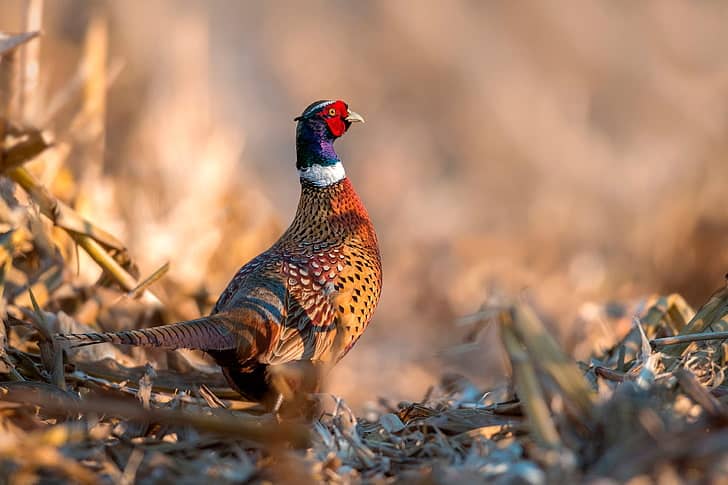
Also called tragopan satyr, the horned pheasant is found in South Asia, more specifically in the Himalayan region. This colorful bird with orange plumage and a blue head lives in pairs in highland forests. It spends most of its time foraging on the ground and only perches at night to sleep.
10. Mandarin Duck
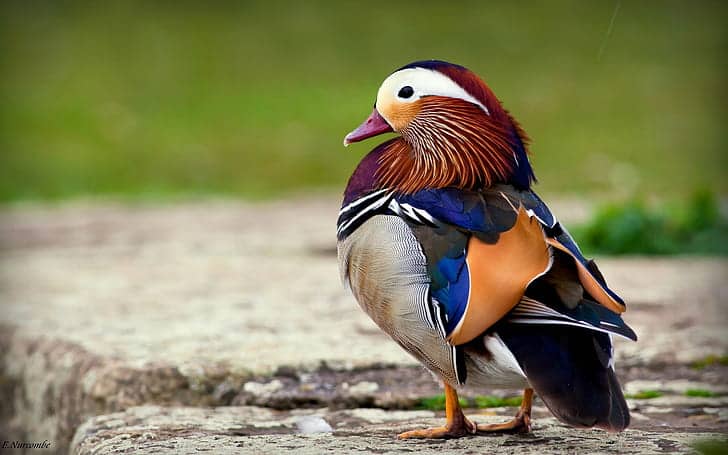
Native to Northeast Asia, the male mandarin duck owns a plumage-colored inbreeding. At the end of spring, it, therefore, loses its colors to take on the same appearance as the female, whose colors are duller. Symbol of loyalty, this bird is famous for living with the same partner throughout its life.
Also Read: Top 10 Birds with Spectacular Beaks
